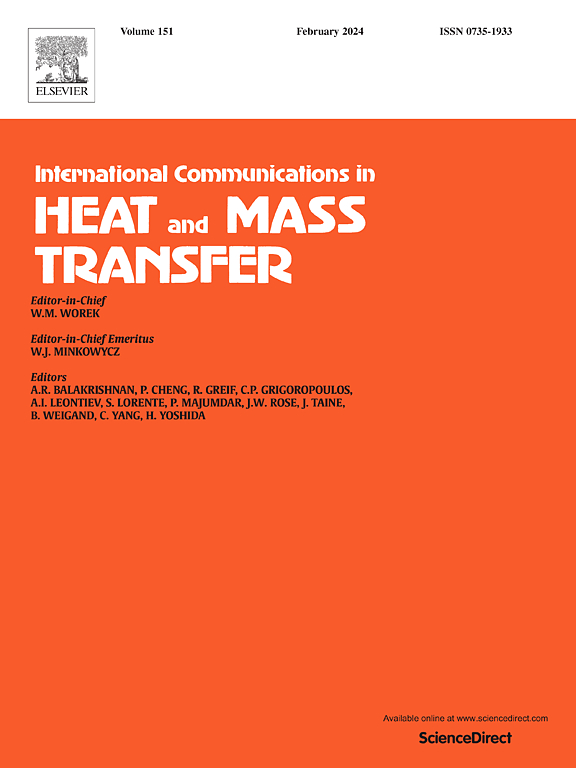Microscale integration of thermal, chemical, and mechanical boundaries for the prediction of macroscale barrel erosion
IF 6.4
2区 工程技术
Q1 MECHANICS
International Communications in Heat and Mass Transfer
Pub Date : 2025-07-18
DOI:10.1016/j.icheatmasstransfer.2025.109374
引用次数: 0
Abstract
Quantifying the erosion features and predicting the service life of the barrel are important steps in the development of intelligent artillery. The thermal, chemical and mechanical conditions of the barrel during the launching process are determined using the two-phase flow interior ballistics and experimental tests. On this basis, the calculation methods for barrel erosion at the macroscale and cross-scale are presented. Finnie erosion theory and near-ellipsoid hypothesis are used to model the macroscale erosion, and molecular dynamics, dislocation dynamics and agent models are used to model the cross-scale erosion. The high temperatures exceeding 2800 K, the complex chemical reactions and the mechanical impacts exceeding 400 m/s determine that the macroscale method cannot accurately obtain material parameters and quantify erosion features. However, the cross-scale method unifies the thermal, chemical and mechanical conditions at the microscale, characterizes material plasticity and crack propagation at the mesoscale, and accurately quantifies erosion features at the macroscale. Finally, the comparison between the experimental results and the calculations from the two methods further confirms the accuracy of the cross-scale method in quantifying the barrel erosion.
热、化学和力学边界的微尺度集成,用于预测宏观尺度的桶状侵蚀
火炮身管侵蚀特性的量化和使用寿命的预测是智能火炮发展的重要步骤。利用两相流内弹道和实验测试,确定了炮管在发射过程中的热、化学和力学条件。在此基础上,提出了宏观尺度和横向尺度下桶身冲蚀的计算方法。宏观侵蚀模型采用芬尼侵蚀理论和近椭球假设,跨尺度侵蚀模型采用分子动力学、位错动力学和介质模型。超过2800 K的高温、复杂的化学反应和超过400 m/s的机械冲击决定了宏观尺度方法无法准确获得材料参数和量化侵蚀特征。而跨尺度方法统一了微观尺度上的热、化学和力学条件,在中观尺度上表征了材料塑性和裂纹扩展,在宏观尺度上准确量化了侵蚀特征。最后,将实验结果与两种方法的计算结果进行了比较,进一步证实了交叉尺度法量化管身冲蚀的准确性。
本文章由计算机程序翻译,如有差异,请以英文原文为准。
求助全文
约1分钟内获得全文
求助全文
来源期刊
CiteScore
11.00
自引率
10.00%
发文量
648
审稿时长
32 days
期刊介绍:
International Communications in Heat and Mass Transfer serves as a world forum for the rapid dissemination of new ideas, new measurement techniques, preliminary findings of ongoing investigations, discussions, and criticisms in the field of heat and mass transfer. Two types of manuscript will be considered for publication: communications (short reports of new work or discussions of work which has already been published) and summaries (abstracts of reports, theses or manuscripts which are too long for publication in full). Together with its companion publication, International Journal of Heat and Mass Transfer, with which it shares the same Board of Editors, this journal is read by research workers and engineers throughout the world.

 求助内容:
求助内容: 应助结果提醒方式:
应助结果提醒方式:


